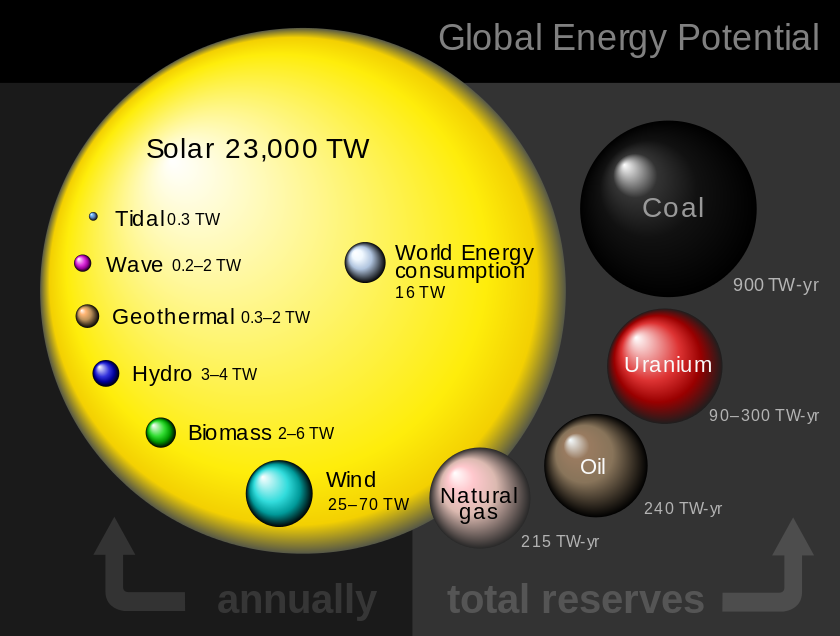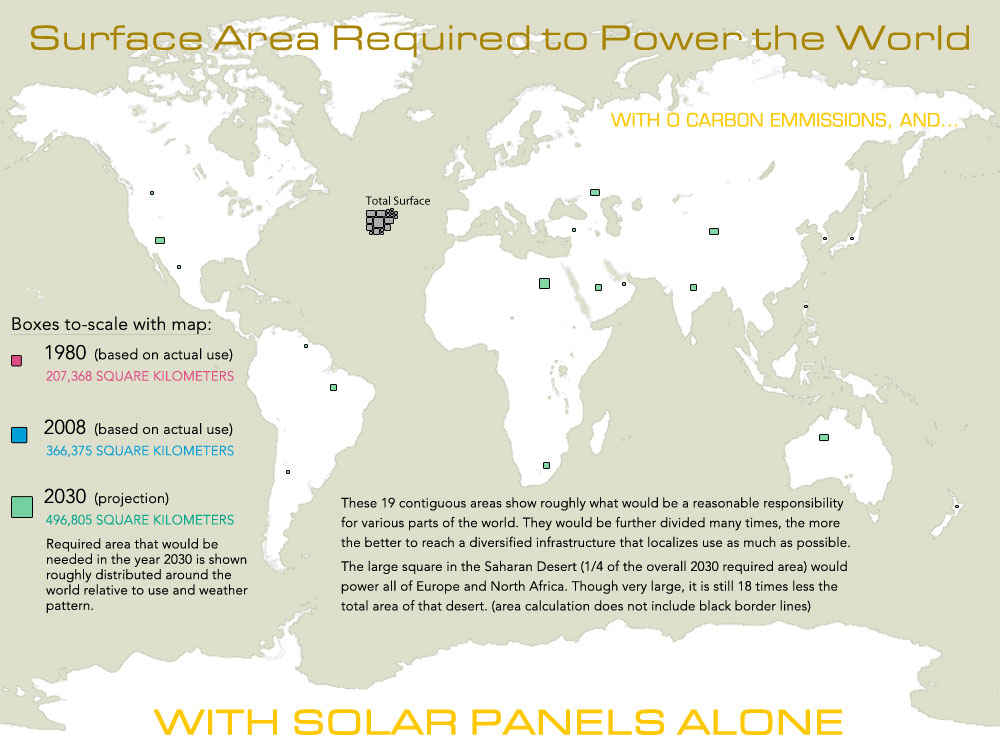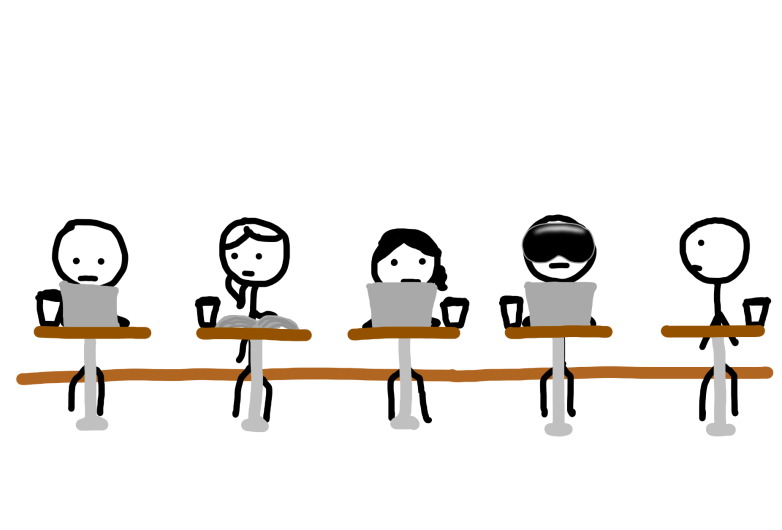In the Tesla post, we established what would need to happen for us to get to a totally sustainable future world:
1) We need almost everything we use to be running on electricity.
2) We need almost all of our electricity to be produced from sustainable sources.
We’ve talked about #1 a lot already in the Tesla post. There are other parts of #1 beyond cars—think of what still works in your house when there’s a blackout. For many people, that’s their car, their heat, their stove, and their water. Water faucets are usually powered by gravity, so they’re off the hook, but the other three things should all eventually end up running on electricity. Musk is so optimistic about the future of #1 that he thinks all transportation except space-bound rockets will go electric in the future.
But how about #2? The fact is, #2 is an even more important challenge to conquer than #1—why? Because even if we perfect #1 and everything runs on electricity, if that electricity isn’t produced cleanly, it has limited effect. Electric cars can’t fix the grid or shut down fossil fuel power plants—all cars can do is get themselves ready for the Electric Era by growing up and ditching gas. That’s their role in this puzzle.
To conquer #2, we’ll need to pour money and innovation into sustainable energy production the same way we’ve poured ourselves into coming up with creative new ways to extract fossil fuels.
In order for an energy source to be sustainable, it has to be both renewable and clean, which I’m not sure everyone realizes are different things—i.e. A) renewable so it won’t run out and B) clean so it won’t throw garbage into the atmosphere. Some good options:
Nuclear: Nuclear is controversial, but built well (i.e. don’t do it dumbly) and in the right places (i.e. not on a fault line), nuclear power plants could play a large, healthy part in our future.
Hydro: Building new dams is hard in 2015 because everyone gets too mad at you, but there are a lot of existing dams, so hydro will continue to play its part.
Wind: Wind has huge potential for growth as a key source of the future.
But none of those are the energy source of the future. Check out this chart and take your best guess:1
Super awkward photoshoot when they made this diagram because solar is just a weird size compared to the others. And if the chart isn’t already silly enough, note that those are spheres—if they were two-dimensional circles, wind would have the diameter of a marble, coal would be the size of a bowling ball, and solar would be the size of a small house.
Musk calls the sun “this handy fusion reactor in the sky, where you don’t have to do anything—it works, it shows up every day, and it produces ridiculous amounts of power.”
And ridiculous is the right word—the sun radiates more energy to the Earth in a couple hours than all of humanity consumes from all sources each year.
We also sometimes forget that the sun already powers almost everything on Earth. The sun powers the weather, causing wind, precipitation, and warmth to exist; it’s the original source of all fossil fuel energy; and it powers the whole biosphere and its murder/theft cycle.1 Harnessing solar energy just cuts out various middlemen and goes straight to the source.
So we have this endless energy source and on the other side, most of our energy needs can be met with electricity. That makes solar panels—the connection between these two things—the most important thing ever. Right?
Musk seems to think so. Because he has nothing to do, he and his two cousins started SolarCity in 2006 with the mission of “accelerating mass adoption of sustainable energy.” Sound familiar? SolarCity’s mission and Tesla’s mission are two halves of a single effort to get us into the yellow zone.
SolarCity is like the Dell Computers of solar power, bringing together disparate parts of the supply chain to make an otherwise difficult process easy for the consumer. The hard part with solar power isn’t getting the panels—they’re increasingly cheap and easy to come by—it’s all the other stuff, like mounting the panels on the roof and wiring them to the grid. By acting as a one-stop-shop for homes and businesses who want to run on solar, SolarCity has become by far the largest solar installation company in America (and they’re about to get bigger—they’re currently building an advanced panel production factory in Buffalo, NY, which will be triple the size of the largest US solar plant). SolarCity is kind of like a distributed utility, or as they sometimes call it, “infrastructure as a service.” And they, and other companies like them, have given families and businesses an alternative to their local electrical utility.
Solar power is all great until every night when it goes away, like an inconvenient waterfall that only runs during the day. And what would you do if you lived next to a waterfall that only ran during the day, but you knew you were going to want water at night too? You’d get a cup, or a bucket, or a barrel, and you’d collect a lot of water during the day to have at night. With solar power, the bucket is a big stationary battery. The battery hooks up to the roof solar panels, and collects energy all day for use at night. Incredibly obvious, right?Conveniently, one of Musk’s side projects is that $5 billion delicious-looking Gigafactory I showed you before. Musk says 30% of the Gigafactory capacity will be dedicated to making their stationary battery—called the Powerwall—making Tesla kind of a battery company as much a car company. For larger customers, Tesla makes a huge battery called the Powerpack, and for huge customers, Powerpacks can be grouped by the hundreds. Musk envisions entire cities running off of a nearby solar field and an accompanying block of batteries.Musk explained this all in a keynote presentation last month.
Solar energy is growing quickly, but Musk thinks the growth rate is going to explode in the coming years, predicting that solar will become the largest world energy source by 2031.2 His goal is for unsubsidized solar power to cost less than grid electricity from coal or fracked gas, and he thinks that over time, more and more families, businesses, and cities all over the world will ditch the grid and go energy independent. Musk also suggested that the solar panel + battery unit might “leapfrog” power lines in developing parts of the world—i.e. they’ll never get power lines at all because they’ll go solar before power lines ever arrive—kind of like the way mobile phones leapfrogged landlines for many people in developing nations.
When you realize how little of the world you’d need to cover with solar panels in order to power all of humanity—especially since most of the panels would go on rooftops and not take up extra land—the more obvious a solar future seems:2
I always think it would be cool to go back to 1994, knowing what I know now about the internet, and watch it all unfold up close. But the thing is, 2015 is the 1994 of some other important development—and rather than wonder what 1994 would have been like, I should be figuring out what Earth-altering movement is currently in its nascent stages.
I think we may be on the cusp of a revolution in solar power. Good time to start following the story.
___________
This was a mini-post that’s part of a larger series on Elon Musk and his companies:
Part 1: Elon Musk Series: Introduction
Part 2: How Tesla Will Change the World
Part 3: How (and Why) SpaceX Will Colonize Mars
Part 4: The Cook and the Chef: Musk’s Secret Sauce
_______
If you like Wait But Why, sign up for our email list and we’ll send you new posts when they come out.
To support Wait But Why, visit our Patreon page.
The few exceptions are geothermal energy, which is powered by the Earth’s hot core; ocean wave energy, which is powered by the moon’s gravity; and nuclear energy, which extracts energy from heavy elements like Uranium, which originally got their stored energy from ancient supernovae.↩
Random year to pick.↩







